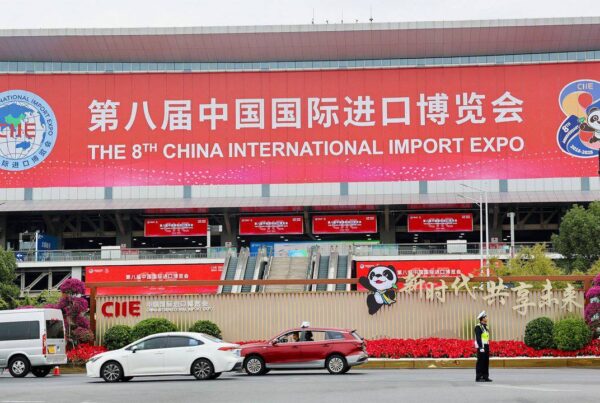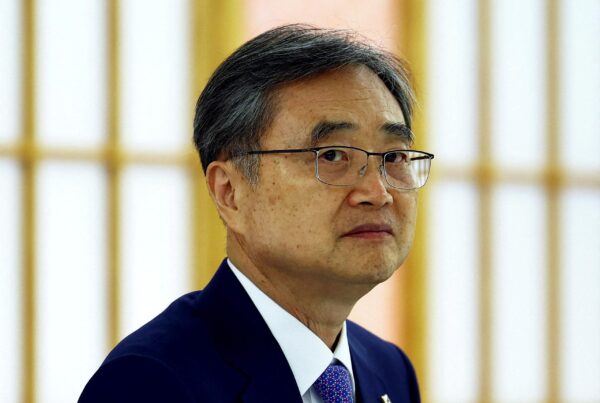China has officially designated October 25 as Taiwan Restoration Day, marking a symbolic assertion of Beijing’s sovereignty claim over the self-governed island. The decision, ratified by the Standing Committee of the National People’s Congress (NPCSC), underscores Beijing’s growing emphasis on what it calls “national reunification.”
According to the South China Morning Post, the new national observance aims to commemorate the 80th anniversary of Japan’s surrender in Taiwan in 1945, when the island was handed over to the Kuomintang (KMT) government after World War II. The ceremony will be held this Saturday in Beijing and several other major cities.
Historical Context Behind the Taiwan Restoration
The designation of Taiwan Restoration Day is rooted in a pivotal historical moment. On October 25, 1945, Japanese forces formally surrendered the island to the Republic of China (ROC) following Tokyo’s defeat in World War II. This date has long held symbolic meaning for both sides of the Taiwan Strait.
In mainland China, the event is viewed as the restoration of Chinese sovereignty over a lost territory after 50 years of Japanese colonial rule. Meanwhile, in Taiwan, the historical interpretation is more complex. The handover marked the end of Japanese rule but also preceded decades of political division following the Chinese Civil War, which led to the KMT retreating to Taiwan in 1949.
Taiwan’s Response to the Announcement
Taiwanese officials have not officially commented on Beijing’s new declaration, but analysts in Taipei describe the move as “highly political.” The Mainland Affairs Council of Taiwan previously warned against Beijing’s use of “historical narratives” to legitimize territorial claims.
Taiwan, officially known as the Republic of China (ROC), has operated as a self-governed democracy since the mid-20th century. Despite this, Beijing continues to view it as a breakaway province, vowing to pursue reunification — by force if necessary.
Global Reactions and Diplomatic Tensions
The new holiday could further escalate tensions between China and countries that support Taiwan’s autonomy, including the United States and Japan. Washington has reiterated its commitment to Taiwan’s defense under the Taiwan Relations Act, while Tokyo has expressed “serious concern” about any move that may destabilize regional peace.
Diplomatic observers note that this announcement fits into a broader pattern of assertive nationalism by Beijing. In recent months, China has expanded military drills near Taiwan and increased pressure on countries recognizing the island’s independence.
Symbolism and Political Messaging
By institutionalizing Taiwan Restoration Day, Beijing seeks to consolidate its domestic narrative of national unity. The commemoration aligns with President Xi Jinping’s agenda of achieving “national rejuvenation,” a slogan that underscores the Chinese Communist Party’s long-term goal of reunifying Taiwan with the mainland.
Linking History to Modern Policy
The timing of the announcement on the 80th anniversary of Japan’s surrender is no coincidence. It allows China to frame the restoration theme within a broader historical narrative of anti-colonial victory and national revival. State media have already begun referring to the date as a “day of historical justice,” highlighting China’s role in reclaiming lost territories after a century of foreign domination.
The Message to Domestic and International Audiences
Domestically, the move bolsters patriotic sentiment ahead of China’s National Day celebrations. Internationally, it serves as a strategic message to both Taipei and Washington that Beijing is resolute in its stance on sovereignty. Analysts from Peking University suggest the new holiday could be used to strengthen “patriotic education” and align public opinion around Taiwan-related policies.
Taiwan’s Political Landscape and Public Perception
In Taiwan, public sentiment remains divided over the island’s identity. While a majority of Taiwanese favor maintaining the current democratic system without formal independence, support for unification with China has reached historic lows.
Historical Sensitivities Around October 25
Taiwan once celebrated October 25 as “Retrocession Day,” but official commemorations have faded in recent decades due to its controversial political implications. Many in Taiwan view the day as marking the start of authoritarian rule under Chiang Kai-shek’s regime rather than a national liberation.
Rising Tensions in Cross-Strait Relations
The timing of Beijing’s announcement comes amid heightened military activities around the Taiwan Strait. Chinese fighter jets and naval vessels have made frequent incursions near Taiwan’s air defense identification zone (ADIZ) throughout 2025. Taipei’s Ministry of National Defense has called these actions “a form of psychological warfare” intended to pressure Taiwan’s government ahead of next year’s presidential election.
International Implications and Regional Stability
The creation of Taiwan Restoration Day is expected to influence regional diplomacy, especially in East Asia. Neighboring countries like Japan, South Korea, and the Philippines are watching closely, concerned that the move could deepen regional polarization.
U.S. and Allies’ Strategic Calculations
Washington’s Indo-Pacific strategy continues to prioritize stability in the Taiwan Strait. The U.S. Navy has maintained a regular presence in the region through freedom-of-navigation operations. Analysts suggest Beijing’s symbolic gesture may be a prelude to more assertive political actions or even a test of international response.
Economic and Security Concerns
Beyond geopolitics, businesses are also wary. The Taiwan Strait remains one of the world’s busiest shipping routes, and any escalation could disrupt global supply chains, especially in the semiconductor industry where Taiwan dominates production.
Beijing’s Long-Term Strategy
Experts believe that designating October 25 as Taiwan Restoration Day fits into a broader long-term campaign to normalize the concept of reunification in both domestic and international discourse.
Expanding Cultural and Educational Influence
Chinese educational authorities are expected to introduce new curriculum references emphasizing the historical significance of the “restoration.” Museums and media outlets are also preparing special exhibitions and documentaries to mark the inaugural commemoration.
From Symbolism to Policy
While largely symbolic, this declaration could pave the way for further institutional steps — such as commemorative stamps, military parades, or cultural festivals — that reinforce Beijing’s narrative. Over time, these efforts may deepen the ideological groundwork for future unification initiatives.
China’s decision to establish Taiwan Restoration Day is more than a historical commemoration; it is a political statement about sovereignty, unity, and national identity. As Beijing doubles down on its message of reunification, the move is likely to heighten tensions across the Taiwan Strait and draw further scrutiny from the international community.
For readers seeking broader coverage on East Asia’s evolving geopolitical dynamics, visit Olam News for in-depth reports and expert analysis.




